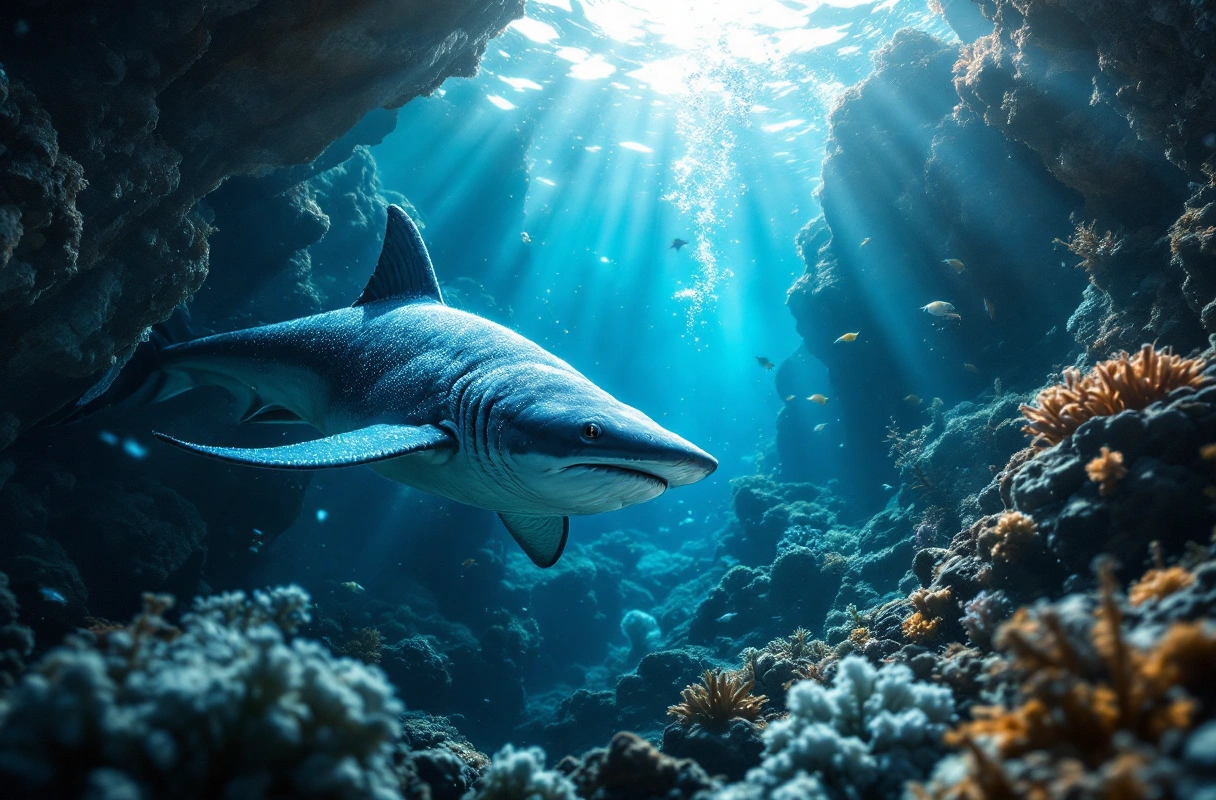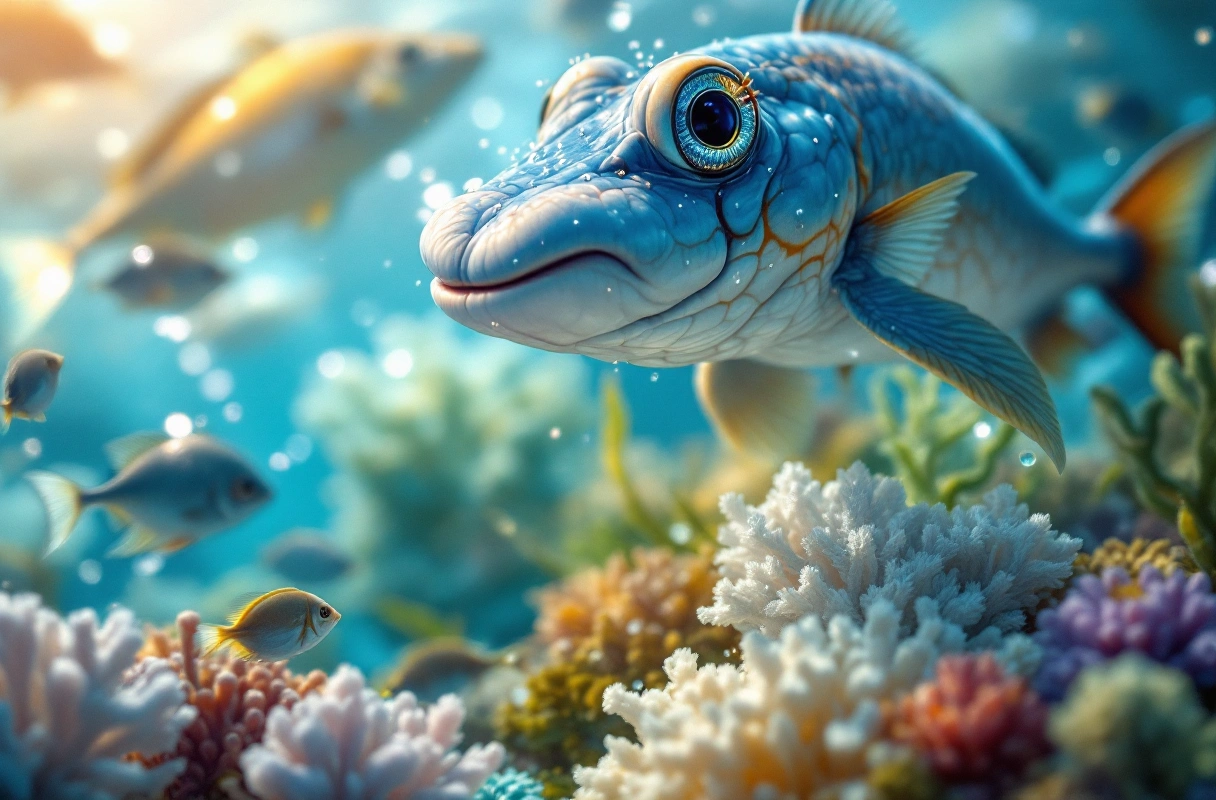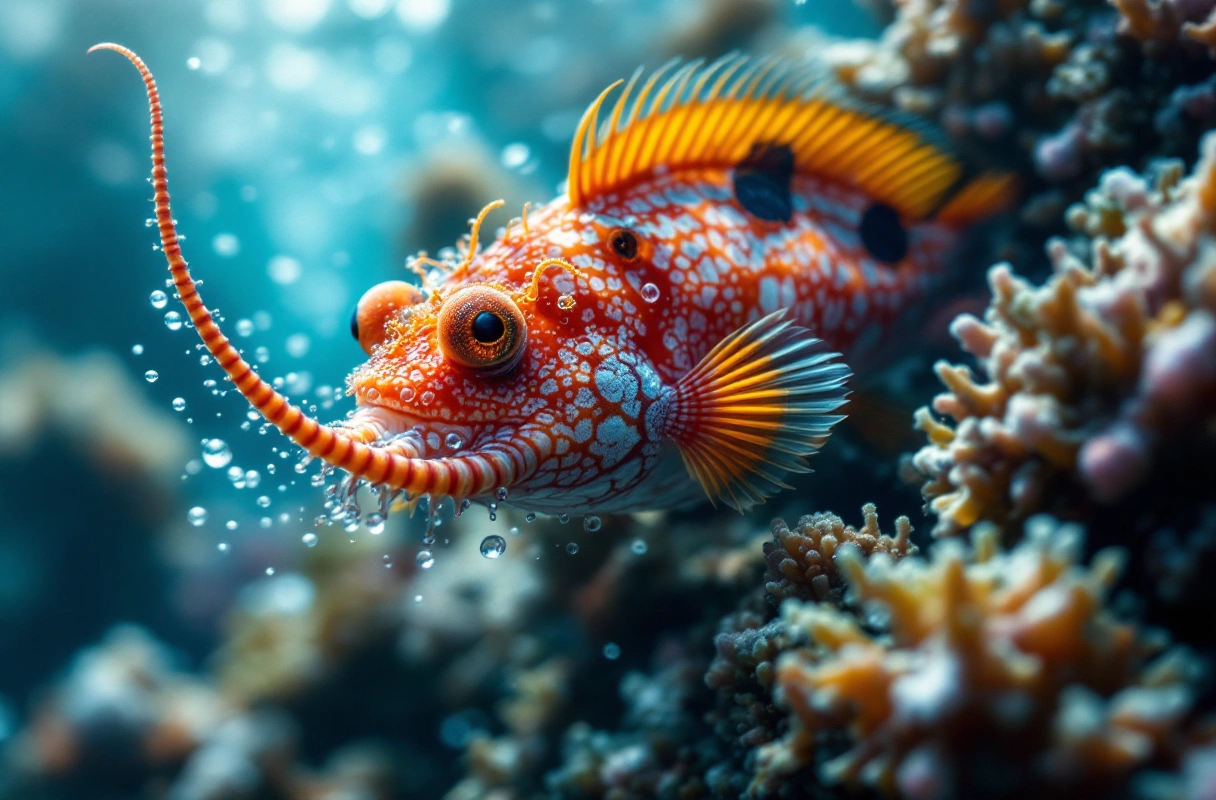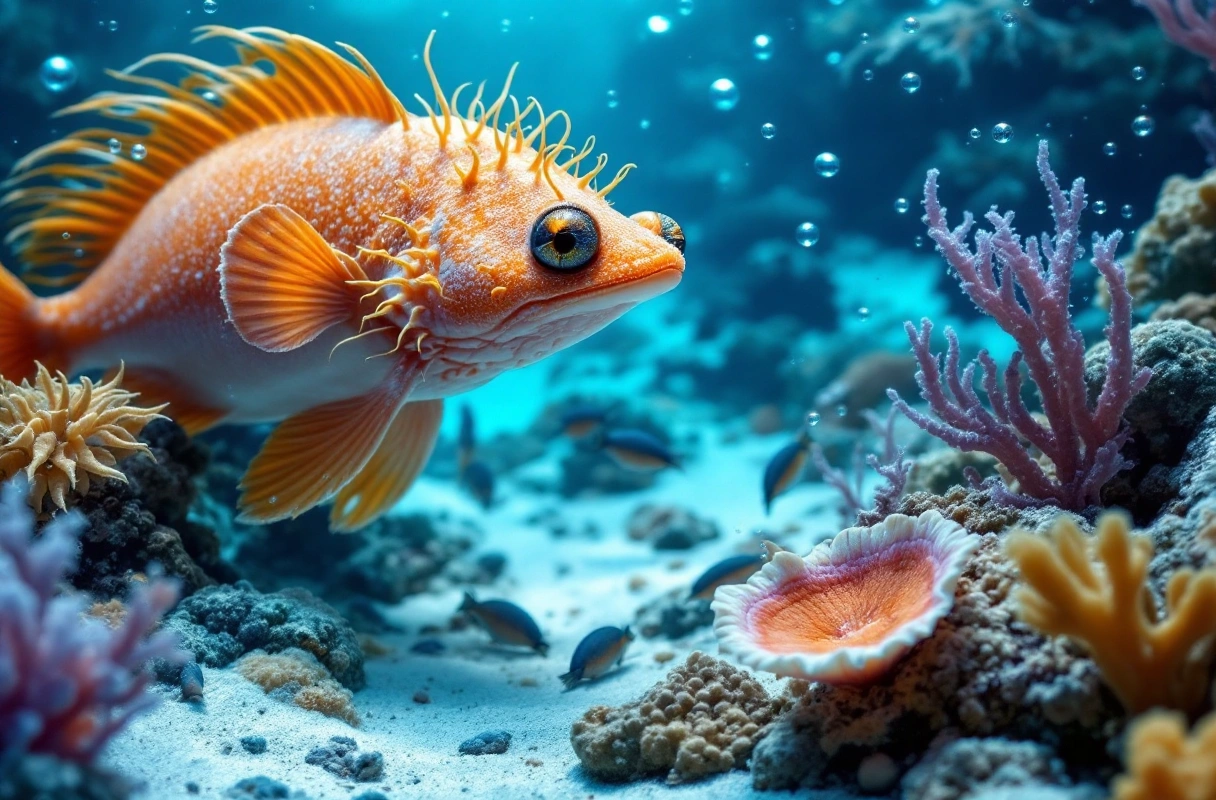Beginner’s Guide to Identifying Common Sea Creatures
The ocean is a vast and mysterious realm, teeming with an incredible diversity of life forms known as sea creatures. From the colorful coral reefs to the deep, dark abyss, these organisms play a crucial role in the marine ecosystem and contribute significantly to the health of our planet. For nature enthusiasts, students, and kids eager to explore the wonders of marine biology, understanding how to identify common sea creatures is an exciting endeavor. This beginner's guide will equip you with the knowledge needed to recognize various sea creatures and delve into the fascinating ways they adapt to their environments.
Understanding Sea Creatures
What Are Sea Creatures?
Sea creatures encompass a wide variety of organisms that inhabit the ocean and other bodies of saltwater. These include animals, plants, and microorganisms, each with unique characteristics and roles within their ecosystems. Common categories of sea creatures include:
- Fish: From the vibrant clownfish to the formidable shark, fish are one of the most recognizable groups of sea creatures.
- Mammals: Marine mammals like dolphins, whales, and seals are known for their intelligence and social behaviors.
- Invertebrates: This category includes a vast array of organisms such as jellyfish, octopuses, and crustaceans, which lack a backbone.
- Plants: Marine flora, including seaweed and seagrass, provides essential habitat and food sources for various sea creatures.
Importance of Sea Creatures
Sea creatures are vital to the health of marine ecosystems. They contribute to nutrient cycling, help maintain the balance of marine food webs, and provide essential services such as carbon sequestration. Additionally, many sea creatures are integral to human economies, supporting industries like fishing and tourism. Understanding and identifying these organisms not only fosters a deeper appreciation of marine life but also highlights the importance of conservation efforts to protect these habitats.
Common Sea Creatures and Their Identification
Fish
Recognizing Common Fish Species
Identifying fish can be an enjoyable and rewarding experience. Here are some common sea fish and tips for recognizing them:
- Clownfish: Known for their vibrant orange and white stripes, clownfish are often found in anemones.
- Blue Tang: This bright blue fish, famously known as Dory from the animated film "Finding Nemo," has a distinct yellow tail and black markings.
- Lionfish: Recognizable by their striking red and white stripes and long, venomous spines, lionfish are native to the Indo-Pacific region.
Marine Mammals
Spotting Marine Mammals
Marine mammals are often seen swimming near the surface of the water. Here are some tips to identify them:
- Dolphins: These intelligent creatures are known for their playful behavior and can often be seen riding the waves. They have a streamlined body and a pronounced snout.
- Humpback Whales: Identifiable by their large pectoral fins and distinctive tail flukes, humpback whales are known for their acrobatics during breaching.
- Sea Lions: With their external ear flaps and social behavior, sea lions are often found lounging on rocks or beaches.
Invertebrates
Identifying Common Invertebrates
Invertebrates are diverse and can often be found in tide pools or coral reefs. Here are some common examples:
- Octopus: Known for their intelligence and ability to change color, octopuses have eight arms and can often be seen hiding in crevices.
- Sea Urchin: With their spiny exterior and round shape, sea urchins are commonly found on rocky ocean floors.
- Jellyfish: Recognizable by their bell-shaped bodies and trailing tentacles, jellyfish can be seen drifting in the water.
Marine Plants
Recognizing Marine Flora
While not animals, marine plants are crucial to the ecosystem and can be identified by their unique characteristics:
- Kelp: This large brown algae forms underwater forests and provides habitat for numerous sea creatures.
- Seagrass: Often found in shallow coastal waters, seagrass beds are vital for stabilizing sediment and providing shelter for marine life.
- Coral: While often mistaken for rocks, coral is a living organism that forms colonies and provides habitat for many marine species.
How Sea Creatures Adapt to Their Environment
Physiological Adaptations
Sea creatures have evolved a variety of physiological adaptations that enable them to thrive in their unique habitats. These adaptations are crucial for survival and can include:
- Coloration: Many sea creatures have developed camouflage to blend in with their surroundings, helping them avoid predators. For example, flounders can change their color to match the ocean floor.
- Body Shape: Streamlined bodies in fish allow for efficient swimming, while the flat bodies of rays enable them to glide along the sea floor.
- Specialized Appendages: Some organisms, such as the octopus, have developed tentacles with suction cups that allow them to grasp and manipulate objects.
Behavioral Adaptations
In addition to physiological changes, behavioral adaptations also play a significant role in the survival of sea creatures. These adaptations can include:
- Migration: Many fish species, such as salmon, migrate to spawn, traveling long distances to return to their birthplace.
- Social Structures: Marine mammals, like dolphins and orcas, often live in pods, which provide social interaction and cooperative hunting strategies.
- Feeding Strategies: Sea creatures have developed unique feeding strategies suited to their environments. For instance, filter-feeding animals, like baleen whales, have specialized structures to strain food from the water.
Common Misconceptions About Sea Creatures
Misunderstanding Marine Life
There are several common misconceptions about sea creatures that can lead to confusion:
- Myth: All jellyfish are dangerous. While some jellyfish possess venomous stings, many species are harmless and play essential roles in the marine ecosystem.
- Myth: Sharks are mindless killers. In reality, sharks are vital to the health of marine ecosystems, and most species pose little threat to humans.
- Myth: All sea creatures live in the ocean. Many sea creatures can also be found in freshwater environments, including rivers and lakes.
How to Avoid Misidentifying Sea Creatures
To accurately identify sea creatures, it's essential to avoid common pitfalls:
- Relying on inaccurate sources: Always consult reputable marine biology resources or field guides to verify species identification.
- Ignoring habitat: Understanding the habitat where a creature is found can provide vital clues for identification. For instance, certain fish are only found in coral reefs, while others inhabit deeper waters.
Actionable Tips for Identifying Sea Creatures
Equip Yourself with Knowledge
To become proficient in identifying sea creatures, consider the following tips:
- Study local species: Familiarize yourself with the common sea creatures in your area by visiting marine biology websites or local aquariums.
- Use field guides: Invest in a good field guide that includes photographs and descriptions of sea creatures to help with identification.
- Join local marine biology groups: Engaging with like-minded individuals can enhance your learning experience and provide valuable insights into local marine life.
Practice Observation Skills
Developing strong observation skills will significantly enhance your ability to identify sea creatures:
- Take notes: Document your observations during beach walks or snorkeling trips, noting the characteristics of the creatures you encounter.
- Use a camera: Capturing images of sea creatures can help with later identification and serve as a personal record of your experiences.
- Participate in citizen science: Contributing to citizen science projects, such as monitoring local marine life, can provide hands-on experience and deepen your understanding.
The Intersection of Sea Creatures and Marine Conservation
Understanding sea creatures is crucial for promoting marine conservation efforts. As we learn more about these organisms, we can better advocate for their protection and the preservation of their habitats. Education plays a vital role in raising awareness about the threats facing marine life, including pollution, overfishing, and climate change.
How Banana Slug Club Can Help
At Banana Slug Club, we are dedicated to fostering a love for nature and marine biology among young learners and enthusiasts. Our resources and programs aim to inspire curiosity about sea creatures and the ocean ecosystem. We encourage readers to explore our website for engaging educational materials, including articles, videos, and activities focused on marine life.
In conclusion, this beginner’s guide has equipped you with essential knowledge about identifying common sea creatures and understanding their adaptations. By embracing the wonders of marine biology, you can play a part in preserving the beauty and diversity of our oceans. Whether you're a student, a nature enthusiast, or simply curious about the world around you, we invite you to join us at Banana Slug Club to further your exploration of nature, science, and the incredible sea creatures that inhabit our planet. Visit our website or contact us to learn more about our programs and resources designed to spark your passion for the natural world.



